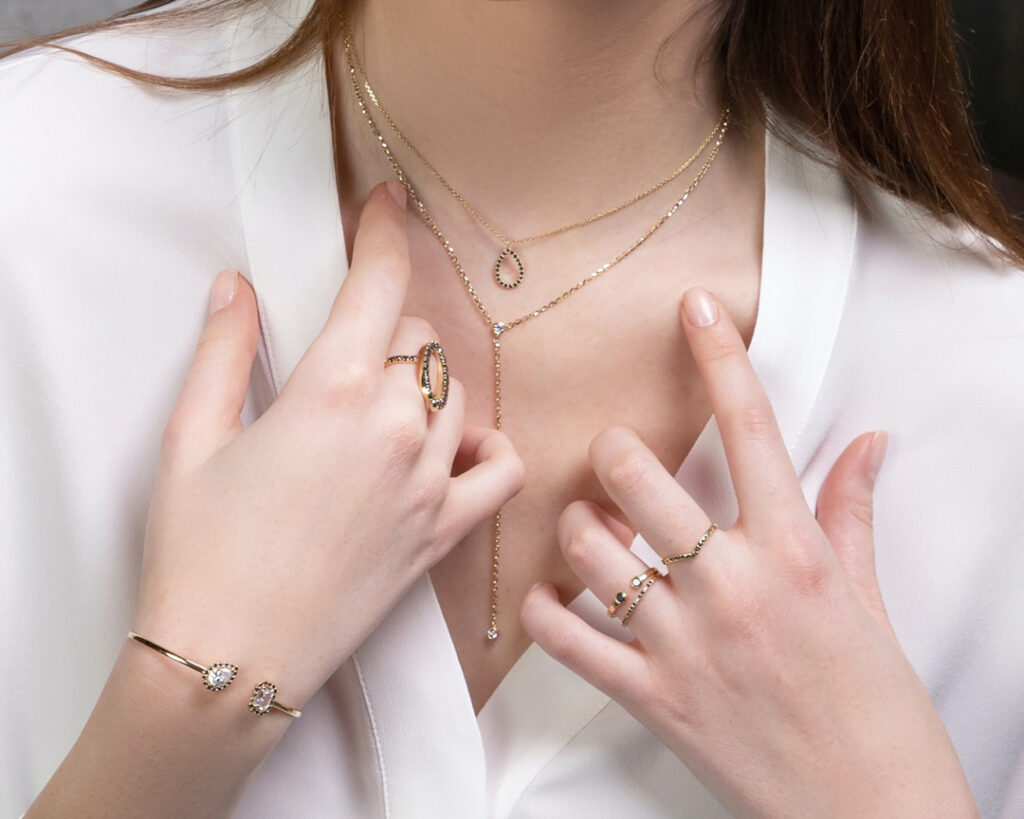
In the glittering world of ecommerce jewelry, few brands shine as brightly as Mejuri. This Canadian powerhouse has carved out a meaningful niche in jewelry, from sourcing to selling, and everything in between. Today, I’m diving deep into the Mejuri story, exploring its roots, growth, and the innovative strategies that have propelled it to the forefront of the industry.
The Genesis of a DTC Gem
Mejuri’s journey began with a simple yet revolutionary idea: to create jewelry that women feel empowered to purchase for themselves, flipping the traditional narrative of jewelry as a gift from men to women. Founded by Noura Sakkijha, a third-generation jeweler with a background in industrial engineering and supply chain management, Mejuri started in 2013 with a modest investment of $5,000 from Noura and her husband’s savings. Initially, the brand resold designs from other creators, but it wasn’t long before Mejuri’s unique vision began to crystallize.
Sustainability sits at the core of Mejuri’s ethos. When bootstrapping the brand, Sakkijha delved deep into the certification regimes and sustainable practices she wanted to incorporate to ensure that Mejuri’s products not only looked good but also did good. This commitment to sustainability, combined with a focus on self-purchasing women, set Mejuri apart in the crowded jewelry market.
The Growth Spark
Mejuri first took Venture Money in 2015 and decided to create their own designs which set them on a growth trajectory that is nothing short of remarkable. They raised a $5 million Series A in 2017 on revenue of around $1M. By 2018, Mejuri was experiencing a 400% growth rate and closed a $23M Series B in 2019 (while Sakkijha was pregnant with twins) with estimated revenue around $43M.
Two of Mejuri’s key growth strategies has been 1) its use of micro-influencers, which helped the brand maintain an organic and approachable image while also leveraging celebrity endorsements to add an aspirational edge and 2) Mejuri’s commitment to drop new products every week and embracing stockouts as a strategy. This has kept customers coming back for more, eagerly anticipating the next release.
Behind the scenes, Mejuri’s operational strategies are equally impressive. The brand’s rapid prototyping and facilitated 3D printing, allows for quick iteration and response to market trends. This agility, combined with a lean inventory model and strategic use of limited editions, has enabled Mejuri to maintain a dynamic and engaging product lineup.
Mejuri had teased an IPO in 2019 when their revenues were under $50M. Then the pandemic happened and their business exploded. Since 2020 Mejuri has expanded their DTC businesses across North America, Oceania, Europe, Asia, and the Middle East. The brand’s retail presence also grew to 18 locations worldwide, showcasing its ability to blend online and offline experiences seamlessly. In 2023 they claimed to have 1.5M customers and have made 3.5M shipments for estimated revenue between $160M-$170M.
A Billion dollar Exit in their future?
What is the future of Mejuri? To adequately prepare for an exit, startups need three things.
- A profitable, repeatable business
- Some sort of Level Up capability
- An Early Win for the acquirer
Mejuri is probably profitable, if not very close to it, and their in-house designs could be considered a level up capability. I think the most interesting thing about their business are the potential early wins for an acquirer. Based on the decisions they have and have not made there are a number of interesting exit opportunities available to them. Early wins could include:
- An expansion of the Mejuri line into several retail locations. I imagine that if Sephora, Nordstrom, or Walmart (none of who carry Mejuri today) would immediately see additional revenue for Mejuri and additional foot traffic for their existing business.
- Acquirer establishes a foothold into an adjacent category. Adding Mejuri to their portfolio would allow a company like Ulta to move from beauty only to beauty + fashion or a company like Lulelmon to move from apparel only to apparel + fashion.
- Acquirer gains a retail presence in North America. Perhaps a European or Asian jewelry company decides to purchase Mejuri and their network of 22 retail locations as a way to gain exposure and learn how to do retail in North America.
Of course, if the current team enjoys what they are doing and feels that they have built a big enough moat they could decide to IPO in order to give their investors liquidity.
Listen to the podcast here or sign up for our newsletter to catch the next episode.




